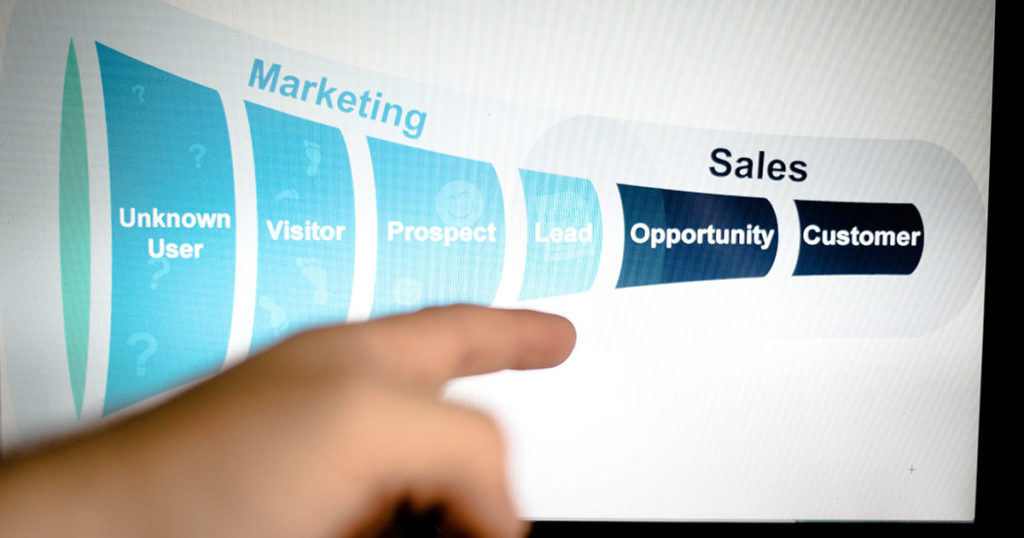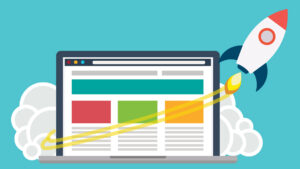Lead funnels are one of the most popular strategies for generating landing page conversions. You can use lead funnels to create or increase your website traffic and to turn those visitors into subscribers, email list members, social media followers, and customers.
Lead funnels make it easy to create an irresistible offer and guide people to take the desired action by encouraging them with a series of well-defined steps that will eventually lead them to convert.
However, the success rate of the lead funnel strategy depends on many factors such as what you actually offer in exchange for someone’s contact information, how often you give out your offer, and whether you give out your offer for free (or not).
The benefits of using a lead funnel strategy include:
- Leading people through a series of steps that will eventually convert them into subscribers or customers.
- The ability to turn website visitors into email list members, social media followers, and customers.
- Building a relationship with people through a series of opt-in offers that they can choose from or get for free.

What Exactly is a Lead Funnel?
Lead funnels are a type of marketing funnel that is used to help convert leads into customers. Lead funnels work by first attracting as many people as possible with the main goal usually being to get their contact information.
This can be done through advertising or other means. Once the company has acquired all the contacts they need, they will then focus on converting those leads into customers using different strategies and tactics.
The lead funnel strategy works well because it achieves two goals at once: acquiring new prospects and turning them into actual paying customers within a relatively short period of time.
Lead funnels are designed with the intent to attract as many leads as possible and to convert those leads into paying customers.

How do Lead Funnels Work?

How Does a Lead Funnel Help with Marketing and Advertising?
Many companies struggle to get customers through their doors. This is especially true for small businesses. It can be difficult to compete with the big, established brands that have already established themselves in an area.
When you’re competing against well-known and popular brands, your marketing campaigns must be just as effective. One way you can improve your success rate is by using lead funnels to attract more customers into your store or office. Lead funnels work by attracting people who might not know about what you offer but could potentially become a customer if they knew more about what was available at your place of business. People will be prompted to enter their information so they can receive updates on new products or services from your company. This way, you can keep in touch with potential customers and remind them of your business in a subtle manner.
Lead funnels also help to supplement the information collected from online marketing campaigns. One popular type of campaign is social media ads on Facebook or Twitter. These types of ads attract interested people who already have some knowledge about what you offer. Social media campaigns are still useful because they allow you to maintain contact with people who have shown interest in your brand. The lead funnel can help to supplement this campaign by delivering valuable information that will convince interested parties to become actual customers.
Lead funnels provide another valuable way of attracting potential clients, and if implemented correctly, they can be an important part of your digital marketing campaign. With the right type of information and a little luck, you can improve your results and increase customer numbers in your business dramatically.

Types of Lead Funnels
There are four main types of lead funnels: direct acquisition (also called outbound), referral (or word-of-mouth), inbound, and social media. The type of lead funnel that is used by a business is dependent on the market type of the business, as well as its size and resources. A new startup company will have to do more legwork in acquiring potential customers through outbound lead generation methods. In comparison, established businesses that already have a sizable customer base can just let their customers do some of the work for them.
Direct Acquisition – outbound lead funnel
An outbound lead funnel is an acquisition method where businesses will employ the use of digital marketing tools to find new customers. The term “outbound” refers to the fact that these are traditional means used by businesses to acquire their leads, mostly done through direct contact with consumers. For example, businesses would use billboards, television adverts, direct mailings, and print advertisements to find customers. Direct Acquisition was the first method used in lead generation, but it is now considered an outdated method since these tools are not effective anymore to attract new customers.
Referral – word of mouth lead funnel
Word of mouth marketing (WOMM) is a form of marketing where businesses rely on their current customers to spread the word about their products or services. It’s by far one of the most powerful types of lead funnels, and it usually attracts new customers who are looking for high-quality referrals rather than attracting them with marketing ads. Organizations that specialize in WOM marketing always provide exceptional customer service and products to their customers, which leads to them becoming brand ambassadors. These brand ambassadors are more than willing to share information about the business of their own volition since they are satisfied customers who were treated well by the business.
Inbound lead funnel
An inbound lead funnel is when businesses utilize marketing tools such as blogs, ebooks, marketing software, and other forms of content marketing to reach out to customers. Inbound lead generation is an umbrella term that can also include product sales leads through landing pages. It’s considered as a type of “pull” marketing where businesses rely on their quality content to attract their customers instead of “pushing” promotional material towards them by spending money on marketing ads.
Social media lead funnel
With the rise of social media, businesses were able to find new ways to market themselves through these websites. Social media is definitely one of the top forms of outbound lead generation when businesses wanted to grow their customer base by using multiple platforms at once. This method uses advertisements that are directly embedded on these social media sites, which allows businesses to have a better reach and exposure through their marketing ads. Most of the time, advertisements that appear on social media websites are paid for by advertisers who want to get more customers through generating leads.

Should we use a lead funnel to market our products and services?
So, you’re asking if a Lead Funnel is the right marketing strategy for your product or service. Well, that depends on what you are selling and who your target market is.
The benefits of lead funnels:
- You don’t have to market your products to everyone, just those who will be interested.
- You can control who gets your message and when reducing the number of people that get bored or tired of receiving information from you.
- Gets the kind of prospects you want: those who have already expressed interest in your product/service, so they are more likely to buy from you.
- Leads can be nurtured until they are ready to buy, making them more likely to purchase.
- It’s better than hunting for leads because quality is better than quantity.
The disadvantages of lead funnels:
- A lot of time and money needs to go towards developing the perfect sequence/funnel so that it delivers effective results.
- It takes time to build a relationship with prospects, which means you need to be able to provide valuable content for months.
- You may come across as too pushy if you keep emailing them over and over. If they signed up, it’s because they were interested in your product/service but maybe now that you’re messaging them monthly they’re tuned out.
- Leads need to be nurtured over a long period of time which means you have to keep your product/service fresh and interesting or they will stop seeing value from it.
In Conclusion
A lead funnel is a conversion process where potential customers are led step-by-step through an online sales process to make a purchase decision. It starts with getting their contact information (typically an email address), following up with them via email automatically using autoresponders, then guiding them further down the path to purchase by providing more content about the company/product/service they are interested in over time.
A typical sequence of events might be: after signing up for something free like an online course or whitepaper, they get another email about your product or service that is relevant, then one or two more to build rapport and educate the leads further. The final step in the process would be actually making a purchase and getting an order confirmation email.
If you’re having trouble understanding or implementing a lead funnel for your small business, let Blaser Consulting help. Contact us today for a free consultation.















